Nampula is a province in Mozambique known for its remarkable bird life. The province has various bird species, including wading birds, raptors, and songbirds.
Nampula’s diverse habitats provide a habitat for many species of birds, with some of them being endemic to the province. The province’s wetlands are vital for waterfowl, while the forests provide suitable habitat for other bird species.
Whether you’re an experienced birdwatcher or just getting started, Nampula is a great place to observe the incredible variety of bird life.
20 Birds to Watch in Nampula
Nampula is a province in Mozambique known for its remarkable bird life. The province has various bird species, including wading birds, raptors, and songbirds.
Nampula’s diverse habitats provide a habitat for many species of birds, with some of them being endemic to the province.
Here are 20 birds that you should watch out for when visiting Nampula.
1. Grey-crowned Crane
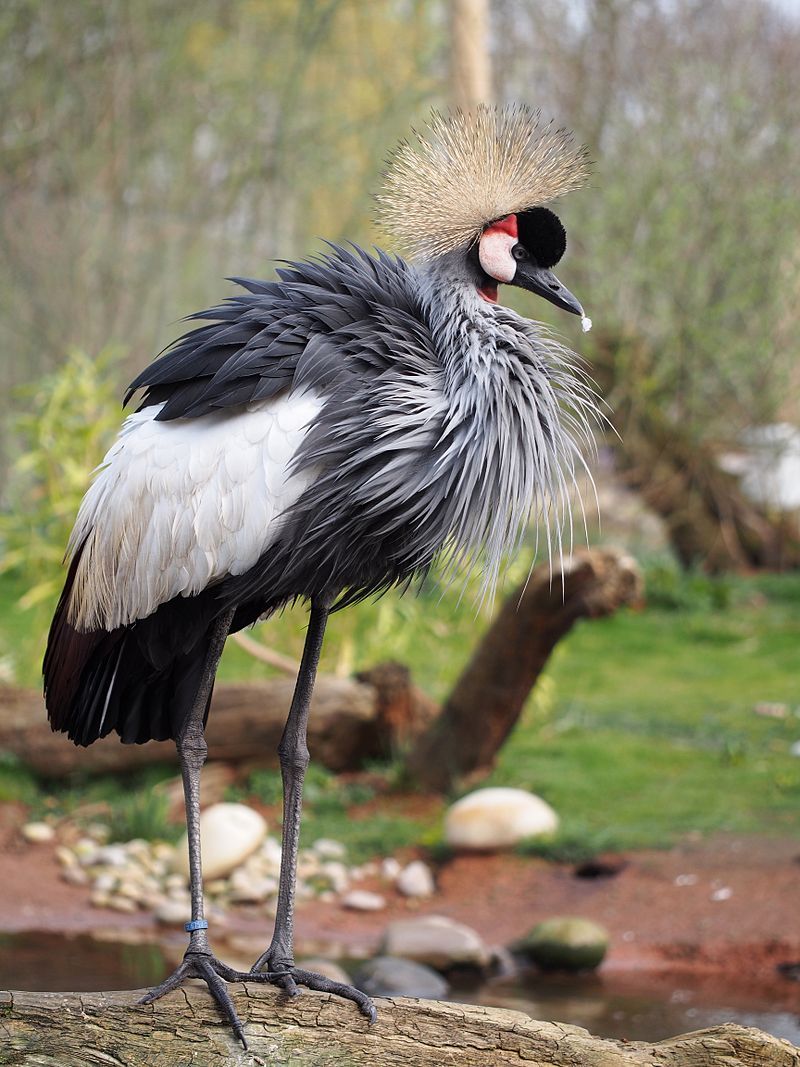
The grey-crowned crane is a beautiful bird that belongs to the Gruidae family of cranes.
This species of crane is also known by a variety of different names, such as African crowned crane, golden crested crane, golden-crowned crane, East African crane, East African crowned crane, African crane, Eastern crowned crane, Kavirondo crane, South African crane, and crested crane.
The grey-crowned crane is a large bird known to inhabit Africa and the Middle East. It has a grey crown of feathers on its head, long legs, and a yellowish-orange beak. This crane can reach a maximum height of about 1.5 meters.
Its wingspan can reach over two meters. The grey-crowned crane is a social bird that lives in groups of up to 50 individuals. It uses its long legs to wade through wetlands in search of food.
This omnivorous bird eats various foods such as insects, small fish, plants, and grains. The grey-crowned crane is a threatened species listed as vulnerable by the International Union for Conservation of Nature.
This species is threatened by habitat loss, hunting, and other human activities. Therefore, we need to protect and conserve this species so that it can continue to exist in the wild.
| Kingdom | Animalia |
| Phylum | Chordata |
| Class | Aves |
| Order | Gruiformes |
| Family | Gruidae |
| Genus | Balearica |
| Species | B. regulorum |
2. Helmeted Guineafowl
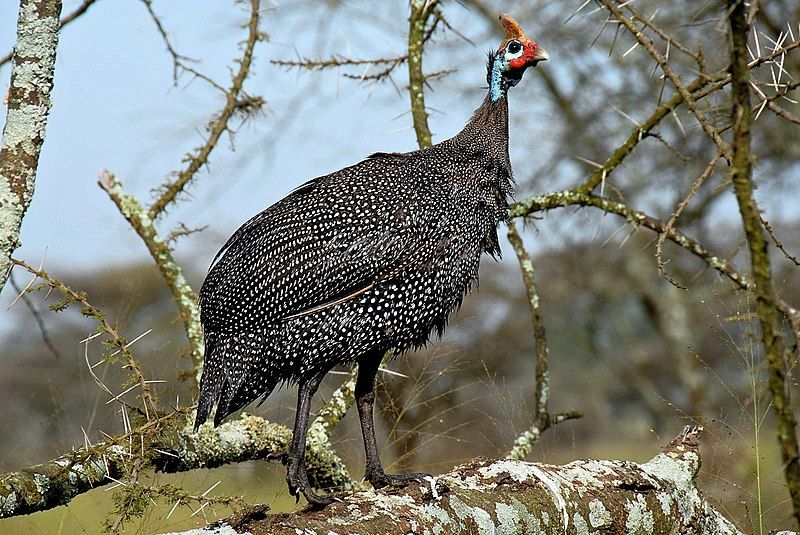
The helmeted guineafowl is a member of the Numididae bird family and is the only species in the genus Numida. It originates from Africa, mainly in the southern region of the Sahara desert.
This guineafowl has been domesticated and introduced to many different areas of the world, such as the West Indies, North America, Colombia, Brazil, Australia, and Europe. It is considered the most recognizable species of the guineafowl bird family.
The helmeted guineafowl has adapted to its many new environments quite well. It is often used as a game bird, and the meat of these birds is highly regarded as a culinary treat. The feathers of this species are also used for decoration and as a source of quills.
The helmeted guineafowl is a medium-sized bird with a long neck and a rounded body. It has a distinctive black and white-striped crest atop its head, naming it “helmeted.”
The feathers of this species are grayish-brown with white spots, and the legs and feet are purple-gray. This bird is quite vocal and has a variety of calls, ranging from loud cackles to low, purring coos.
The helmeted guineafowl is a ground-dwelling bird that usually forages in small groups. It is an omnivore, and its diet consists of insects, seeds, fruits, and small reptiles. It is also an important seed disperser in its native habitats.
Overall, the helmeted guineafowl is a fascinating species with many adaptations. It is a valuable addition to many different environments, and its presence benefits humans and other wildlife.
| Kingdom | Animalia |
| Phylum | Chordata |
| Class | Aves |
| Order | Galliformes |
| Family | Numididae |
| Genus | Numida |
| Species | N. meleagris |
3. Greater Flamingo
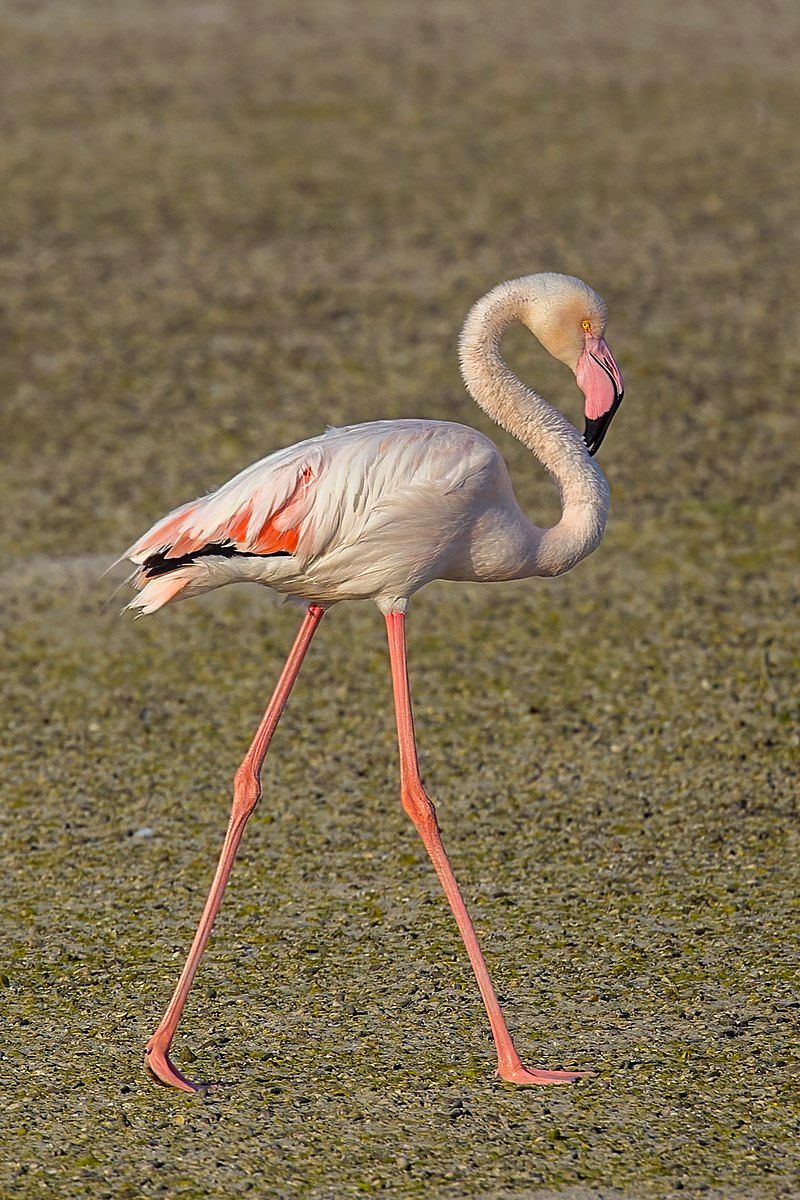
The Greater Flamingo is the most prominent member of the flamingo family and is found in many different areas worldwide.
It can be found in Northern and Sub-Saharan Africa, the Indian Subcontinent, the Middle East, the Levant, the Persian Gulf, the Gulf of Aden, the Red Sea, and the Mediterranean countries of Southern Europe.
This bird is easily recognizable due to its size, pinkish-white color, and long legs and neck. It is also known for its long, curved beak, which it uses to filter tiny food from the water.
The Greater Flamingo eats small aquatic creatures such as crustaceans, mollusks, and some insects. They can also consume plant material such as algae, seeds, and roots. The Greater Flamingo is a social species and can often be found in large groups, numbering in the hundreds.
Flamingos can migrate long distances, making them well-adapted to various environments. They are also quite hardy and can survive in harsh conditions.
The Greater Flamingo is listed as least concern on the IUCN Red List, which means it is currently not facing any significant threats. The Greater Flamingo is a beautiful species, and its bright colors are sure to draw the eye of any bird enthusiast.
Its ability to thrive in multiple environments, its social nature, and its large size make it an impressive species.
| Kingdom | Animalia |
| Phylum | Chordata |
| Class | Aves |
| Order | Phoenicopteriformes |
| Family | Phoenicopteridae |
| Genus | Phoenicopterus |
| Species | P. roseus |
4. White-faced Whistling Duck
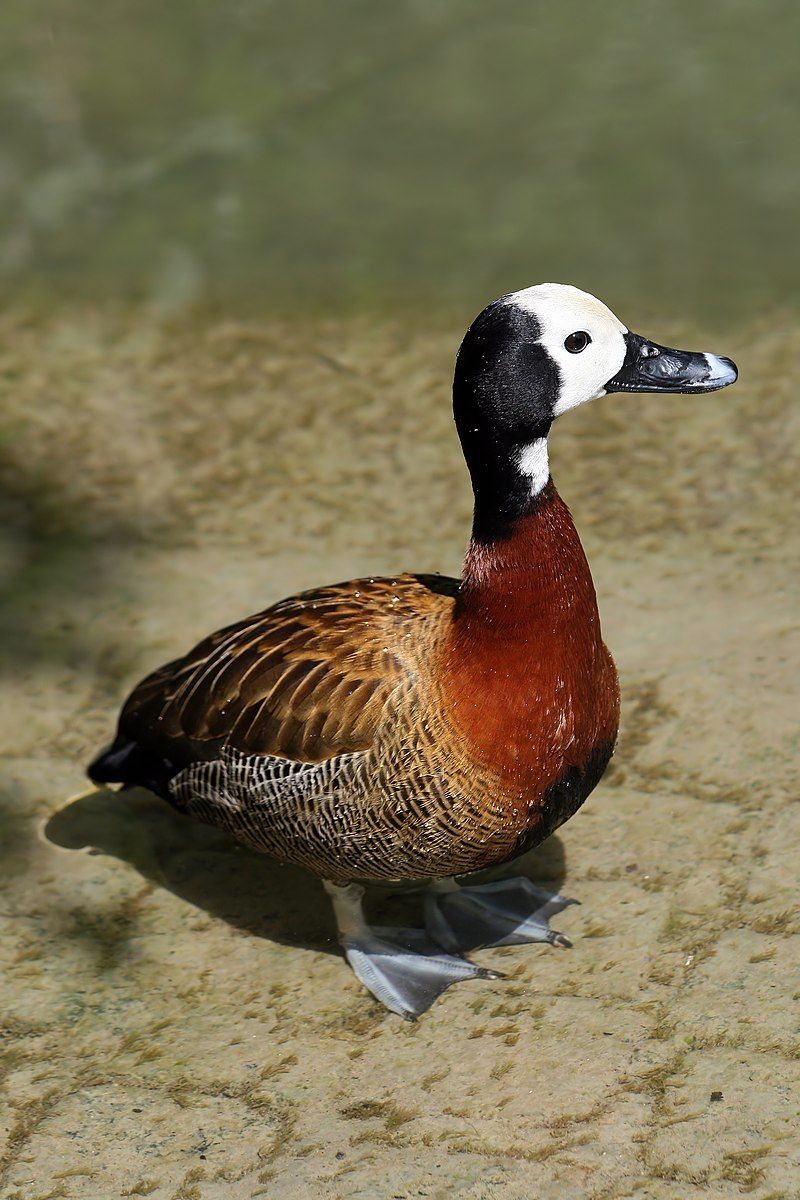
The white-faced whistling duck is a species of duck that is found in sub-Saharan Africa and South America. It is a gregarious bird that enjoys living and traveling in groups.
In certain areas where the conditions are favorable, large flocks of these birds can be seen, with some reaching up to a thousand birds at once. Seeing these large flocks arriving at dawn is something to behold and awe-inspiring.
These ducks are named for their whistling call, distinct to their breed. They are relatively small, with a white face, brown wings, and grey bodies, and tend to live in wetlands and river banks. They are also omnivorous, meaning they eat both plants and animals.
The white-faced whistling duck is an interesting species, and its large flocks are a majestic sight.
| Kingdom | Animalia |
| Phylum | Chordata |
| Class | Aves |
| Order | Anseriformes |
| Family | Anatidae |
| Genus | Dendrocygna |
| Species | D. viduata |
5. Black-crowned Night Heron
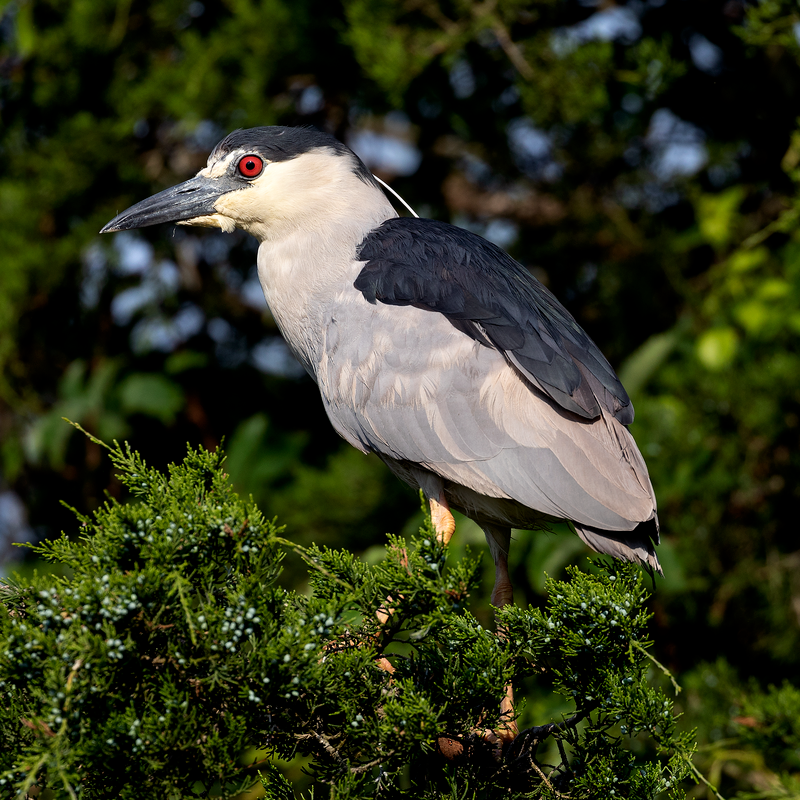
The black-crowned night heron, also known as the black-capped night heron, is a species of heron found in various parts of the world. It is a medium-sized bird, typically measuring 25 and 30 inches long.
It has a black crown on its head, as well as a thick black line running down its neck.
It also has a white throat, belly, grayish-brown back, and wings. The black-crowned night heron is found in many parts of the world, including Europe, Asia, and North and South America.
In Europe, it can be found in countries such as Spain, France, Italy, and the United Kingdom. In Asia, it can be found in countries such as China, Japan, and Thailand. It can be found in the United States, Mexico, and Canada in North America.
It can be found in South America in countries such as Brazil, Argentina, and Peru. The black-crowned night heron is a solitary bird, which means that they typically do not fly in flocks or congregate with other birds.
They are mainly nocturnal birds, meaning they are most active at night and sleep during the day. They are mainly found near wetlands, as they feed on frogs, fish, and other small animals.
They also eat insects, small mammals, and large water creatures such as crayfish. The black-crowned night heron is an important bird species, as it helps to maintain the local ecosystem.
It is a protected species in many countries, and conservation efforts are being made to ensure its continued survival.
| Kingdom | Animalia |
| Phylum | Chordata |
| Class | Aves |
| Order | Pelecaniformes |
| Family | Ardeidae |
| Genus | Nycticorax |
| Species | N. nycticorax |
6. Red-eyed Dove
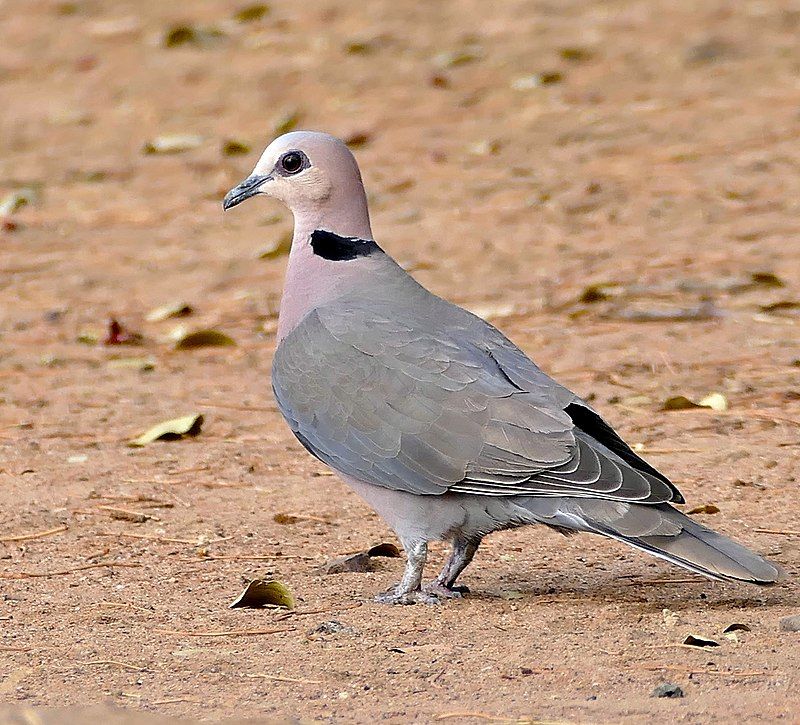
The red-eyed dove is a species of dove that is abundant in the Sub-Saharan African region. It is a small bird, typically grey in color with a red eye marking.
This species has been classified by the International Union for Conservation of Nature (IUCN) as Least Concern since 2004. This means that the population of the red-eyed dove is considered stable and is unlikely to become endangered in the near future.
The red-eyed dove is widely distributed throughout the Sub-Saharan African region, and is commonly seen in gardens, parks, woodlands, and grasslands. It feeds primarily on seeds, grains, and fruits, and generally lives in small groups or pairs.
This species is also known for its distinctive call, which is composed of a series of cooing noises.
The red-eyed dove is an important species in the Sub-Saharan African ecosystem, as it helps to disperse seeds of many different plants, which helps to maintain the balance of the local environment.
| Kingdom | Animalia |
| Phylum | Chordata |
| Class | Aves |
| Order | Columbiformes |
| Family | Columbidae |
| Genus | Streptopelia |
| Species | S. semitorquata |
7. Red-chested Cuckoo
The red-chested cuckoo is a bird species belonging to the family Cuculidae. It is a medium-sized bird that is native to Africa south of the Sahara. In Afrikaans, the red-chested cuckoo is referred to as “Piet-my-vrou, ” derived from its distinct call.
It is a unique cuckoo species with a rust-colored chest and a grayish-brown back. Its wings are gray with a black tip and its tail is short and rounded. The red-chested cuckoo is an omnivorous bird that feeds on insects, small rodents, and lizards.
It is a solitary bird that is most active during the day. It is a territorial bird that is known to defend its area from other birds. The red-chested cuckoo is a fascinating species of bird that has adapted to its African habitat.
| Kingdom | Animalia |
| Phylum | Chordata |
| Class | Aves |
| Order | Cuculiformes |
| Family | Cuculidae |
| Genus | Cuculus |
| Species | C. solitarius |
8. Black-winged Stilt
The black-winged stilt is a type of wading bird that is found in many parts of the world. It is a member of the avocet and stilt family and is recognized by its long, thin legs. Its scientific name is H.
himantopus, which is sometimes used to refer to just one species that is found almost everywhere. This species of bird is known for its black wings and white plumage. It has a long, thin neck and a long, pointed bill.
Its legs are so long that it can stand in water without actually getting wet, making it an adept wader. The black-winged stilt is an omnivore that will eat plants and animals.
Its diet consists of a variety of aquatic insects, crustaceans, fish, frogs, eggs, and small mammals. It is also known to eat some plant matter like seeds and grains. The black-winged stilt is found throughout most of the world in areas with shallow, freshwater wetlands.
It is migratory and will move to different areas depending on the season. It breeds in colonies, and the pairs form strong bonds, with the male helping to build the nest and incubate the eggs.
The black-winged stilt is not considered to be endangered, though its numbers have declined in some areas due to habitat destruction and pollution. It is, however, a protected species, and conservation efforts are being made to help preserve its population.
| Kingdom | Animalia |
| Phylum | Chordata |
| Class | Aves |
| Order | Charadriiformes |
| Family | Recurvirostridae |
| Genus | Himantopus |
| Species | H. himantopus |
9. Great Egret
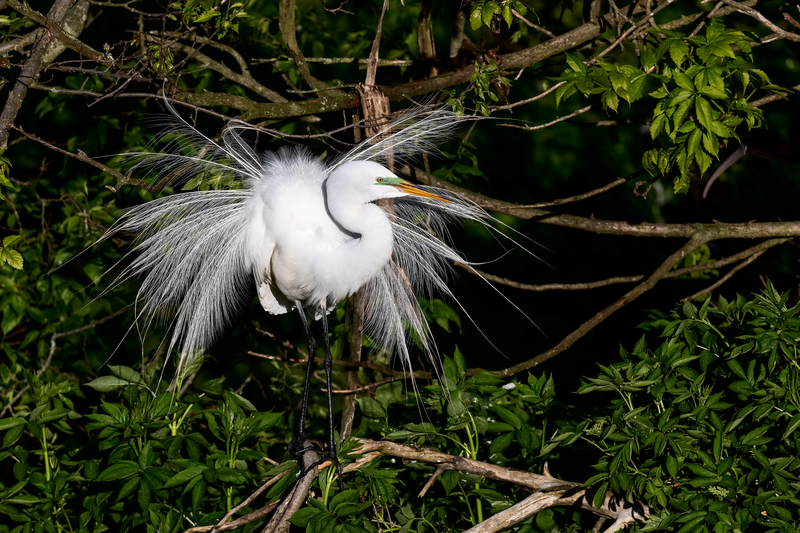
The great egret is a large, widely distributed bird species, with four distinct subspecies found in various areas around the world. It is most commonly known as the common egret, large egret, great white egret, or great white heron.
In Asia, it is found in areas such as India, China, and Japan; in Africa, it has been spotted in countries like Egypt and Ethiopia; and in the Americas, it can be found in Mexico, Brazil, and the Caribbean.
In addition, the species has been found in southern Europe, such as Spain and Portugal. The great egret has recently been seen in more northern parts of Europe, signaling an increased range for the species.
The great egret is a graceful bird with long, slender legs and a long neck, which it uses to feed on fish and other aquatic creatures in shallow waters. Its feathers are usually white, though there are some subspecies that have a yellowish hue.
Its wingspan averages around 65 inches and can reach heights of up to 3.3 feet. The great egret is an important species in many ecosystems, as it helps to keep aquatic environments balanced by preying on small fish and other animals.
The great egret is an iconic species, and it has been used in various cultural symbols throughout the world. It is Japan’s national bird and is featured in the coat of arms of several countries, including Haiti and Honduras.
The great egret is also a popular subject for art, as its graceful beauty has been captured in paintings and photographs. The great egret is a species that is important to the global environment, and it is important that its range is monitored and protected.
As its range is expanding, it is important that conservation efforts are put in place to ensure that its habitats are not disturbed and its populations remain healthy.
| Kingdom | Animalia |
| Phylum | Chordata |
| Class | Aves |
| Order | Pelecaniformes |
| Family | Ardeidae |
| Genus | Ardea |
| Species | A. alba |
10. Emerald-spotted Wood Dove
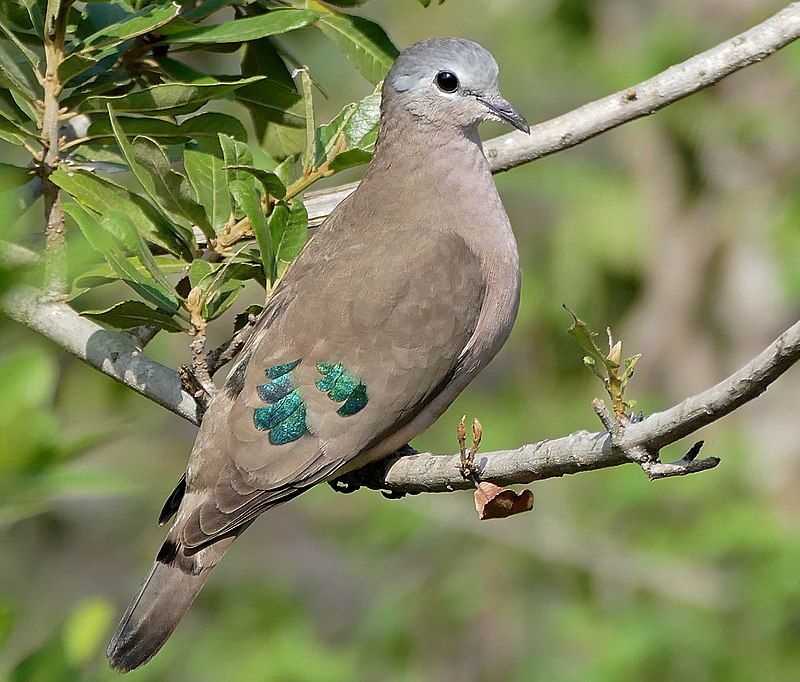
The emerald-spotted wood dove is a species of bird from the Columbidae family. It is found across eastern and southern Africa and prefers open, drier deciduous woodland and second-growth habitats.
It is not found in evergreen rainforests or semidesert areas, as these regions do not provide an ideal habitat for this species of bird. The emerald-spotted wood dove is a medium-sized bird with a grey head and neck, chestnut-brown back and wings, and a white belly.
Its most distinctive feature is the emerald green spots on its wings and tail feathers. It is usually found in small flocks, feeding on grass seeds and other seeds from various plants. This species is relatively common and is not considered to be threatened.
However, its population numbers may be declining due to habitat loss and destruction and competition with other species for food resources.
Therefore, it is important to protect and conserve habitats in order to ensure that the emerald-spotted wood dove can continue to thrive.
| Kingdom | Animalia |
| Phylum | Chordata |
| Class | Aves |
| Order | Columbiformes |
| Family | Columbidae |
| Genus | Turtur |
| Species | T. chalcospilos |
11. Fiery-necked Nightjar
The fiery-necked nightjar is a bird species belonging to the Caprimulgidae family. They are found exclusively in Africa south of the equator. They are most easily recognized by their distinctive and frequent call, which has been described as “good-lord-deliver-us”.
This call is often heard during the night and is a good way to identify them. The fiery-necked nightjar has a unique plumage, with its feathers varying from grey to reddish-brown. Its wings and tail are long and pointed, and its eyes have a yellowish tint.
This bird species is also known for its unique courtship display, consisting of males chasing each other around in circles and displaying their feathers to attract potential mates. The fiery-necked nightjar has an omnivorous diet, which includes insects, fruit, and seeds.
During the day, they usually rest in the shade of trees or on the ground. At night, they are active and can be seen flying around in search of food. Overall, the fiery-necked nightjar is a fascinating species of bird that is native to Africa.
Its distinctive call and unique courtship display make it a delight to observe. It is also an important part of the local ecosystem, as it helps to keep insect populations in check.
| Kingdom | Animalia |
| Phylum | Chordata |
| Class | Aves |
| Clade | Strisores |
| Order | Caprimulgiformes |
| Family | Caprimulgidae |
| Genus | Caprimulgus |
| Species | C. pectoralis |
12. Spur-winged Goose
The spur-winged goose is a species of waterbird found primarily in Sub-Saharan Africa. It is a large bird, measuring up to 75 cm (30 in) in length and weighing up to 2.9 kg (6.4 lbs).
It is a member of the Anatidae family, including other birds such as geese and shelducks. The spur-winged goose has an olive-brown head, neck, white chin, and throat. The upperparts are dark brown, and the underparts are greyish-white.
It has a white patch at the base of its bill and long, light grey legs. A distinct wing spur, a distinguishing feature, also characterizes the species. The spur-winged goose prefers to inhabit shallow wetlands, such as floodplains, swamps, and marshes.
It feeds on seeds, grains, insects, and other small aquatic creatures and grazes on grasses. It is a reasonably social bird, living in small flocks of up to 20 individuals.
Breeding season is typically during the summer months, and the birds will construct a nest of grass and vegetation near the water, where the female will lay a clutch of 4-8 eggs.
The goslings will then hatch and fledge after a few weeks. The spur-winged goose is considered to be of least concern by the IUCN, as its population is supposed to be stable and widespread.
However, it does face some threats from human-induced habitat destruction, as well as from hunting and egg collection. Conservation efforts are in place to protect this species and ensure its population remains healthy.
| Kingdom | Animalia |
| Phylum | Chordata |
| Class | Aves |
| Order | Anseriformes |
| Family | Anatidae |
| Genus | Plectropterus |
| Species | P. gambensis |
13. White-browed Coucal
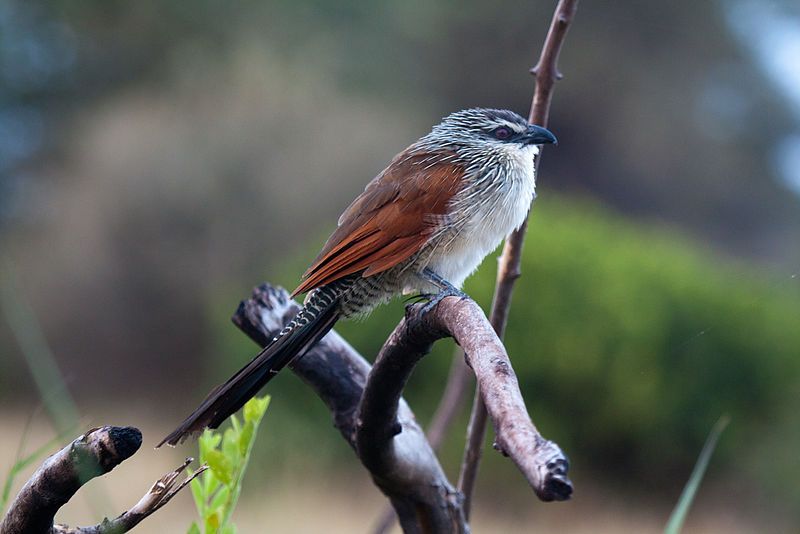
The white-browed coucal, also known as the lark-heeled cuckoo, is a species of cuckoo found in sub-Saharan Africa. It prefers areas with thick vegetation, such as rank undergrowth and scrub, and can also be found in coastal regions.
It is part of the family Cuculidae and is sometimes considered a subspecies of Burchell’s coucal. This species is mainly found in wet forests, thickets, and grasslands, where it feeds on insects and small animals.
It is an elusive bird, rarely seen due to its preference for dense cover. Its song is a loud, rattling, cuckoo-like call to attract mates and establish territory. The white-browed coucal is a solitary bird, often seen alone or in pairs.
It builds a nest in a tree or shrub, where it lays its eggs, and the female alone incubates them. This species is not considered threatened, and its population appears stable.
| Kingdom | Animalia |
| Phylum | Chordata |
| Class | Aves |
| Order | Cuculiformes |
| Family | Cuculidae |
| Genus | Centropus |
| Species | C. superciliosus |
14. Pennant-winged Nightjar
The Pennant-winged Nightjar is a species in a large region stretching from Nigeria to northern South Africa.
This species is a unique intra-African migrant, migrating between two parts of Africa rather than between Africa and other continents.
During the breeding season, the Pennant-winged Nightjar displays remarkable sexual dimorphism, which means that males and females have different physical features. For example, the males have black and white striped wings, while the females have brown wings with spots.
The males also have a noticeably more significant size and more elaborate plumage. These differences help to attract mates during the breeding season.
The Pennant-winged Nightjar is a fascinating species to observe, and its unique migration habits and sexual dimorphism make it an essential part of the African ecosystem.
| Kingdom | Animalia |
| Phylum | Chordata |
| Class | Aves |
| Clade | Strisores |
| Order | Caprimulgiformes |
| Family | Caprimulgidae |
| Genus | Caprimulgus |
| Species | C. vexillarius |
15. Yellow-billed Duck
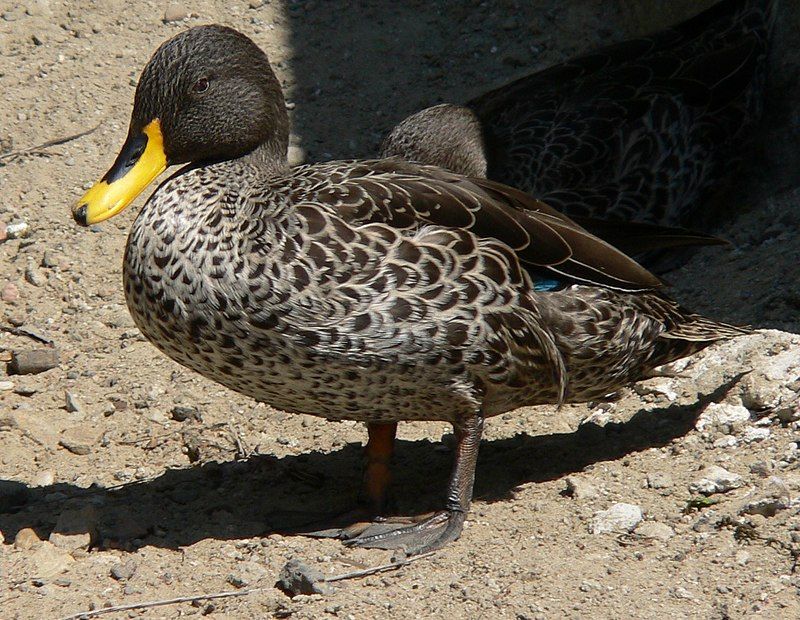
The yellow-billed duck is a medium-sized bird found in southern and eastern Africa. It is a dabbling duck, meaning it feeds on the water’s surface rather than diving for food.
This species is not migratory, but it does wander during the dry season to find suitable bodies of water. It is a very social bird, gathering in large flocks outside the breeding season. It can be found in marshes, ponds, and other wetlands during the breeding season.
The yellow-billed duck has a glossy blue-green head, yellow bill, white neck ring, and grayish chest. The wings are mainly brown with white patches. It feeds on small aquatic animals, aquatic vegetation, grain, and insects.
| Kingdom | Animalia |
| Phylum | Chordata |
| Class | Aves |
| Order | Anseriformes |
| Family | Anatidae |
| Genus | Anas |
| Species | A. undulata |
16. Little Egret
The Little Egret is a small white bird found primarily in the Ardeidae family. It has a long, slender black beak and long black legs. The western race of the bird is distinguished by its yellow feet. The Little Egret feeds in shallow water and on land as an aquatic bird.
It is an opportunistic feeder, eating a wide variety of tiny creatures. It can be found in wetlands, rivers, lakes, and estuaries and sometimes ventures inland to forage for food.
The Little Egret is a graceful wader, often standing in one spot for extended periods, waiting for prey to reach its beak.
It has become an increasingly common sight in many parts of the world, as it is an adaptable bird that can thrive in various habitats. The Little Egret is a beautiful bird, and its white plumage is an attractive sight on land and in the air.
It is a species of conservation concern in some parts of its range, and wildlife experts monitor its population size closely.
| Kingdom | Animalia |
| Phylum | Chordata |
| Class | Aves |
| Order | Pelecaniformes |
| Family | Ardeidae |
| Genus | Egretta |
| Species | E. garzetta |
17. Goliath Heron
The Goliath heron is a species of wading bird from the heron family, Ardeidae. It is found in sub-Saharan Africa and in smaller numbers in Southwest and South Asia. This species is also known as the giant heron due to its impressive size.
It stands up to four feet tall and has a wingspan of up to six feet wide. It has grey plumage and yellow-orange legs and feet. The Goliath heron is a solitary bird that prefers to live in wetlands, such as swamps, marshes, and shallow lakes.
It is an opportunistic feeder that preys on fish, amphibians, small mammals, and invertebrates. It will also scavenge for food when necessary. This species is considered to be vulnerable due to declining numbers in Southwest and South Asia.
Habitat destruction and hunting are the main threats to the Goliath heron’s survival. Conservation efforts are in place to help protect this species and its habitat.
| Kingdom | Animalia |
| Phylum | Chordata |
| Class | Aves |
| Order | Pelecaniformes |
| Family | Ardeidae |
| Genus | Ardea |
| Species | A. goliath |
18. Grey Heron
The grey heron is a species of wading bird belonging to the Ardeidae family. It is native to temperate parts of Europe, Asia, and Africa.
This species is generally considered a resident in most of its range. Still, some populations in the northern regions of its range may migrate southwards during autumn. This bird has a long, slender body that is typically grey.
Its legs are long and thin, helping it to move through shallow water to search for prey. The grey heron is a skilled hunter, using its beak and long neck to capture its prey.
This bird is mainly found near wetlands, rivers, lakes, and coastal areas, where it can find plenty of food.
| Kingdom | Animalia |
| Phylum | Chordata |
| Class | Aves |
| Order | Pelecaniformes |
| Family | Ardeidae |
| Genus | Ardea |
| Species | A. cinerea |
19. White-rumped Swift
The white-rumped swift is a species of bird that belongs to the swift family. It is a small bird that appears to have some similarities to the house martin, but they belong to two different families of birds.
The similarities between these two birds are due to a process known as convergent evolution, which is when species that live in similar environments and share similar lifestyles evolve to have similar features.
This phenomenon occurs when two species are not closely related but have adapted to similar environmental conditions. In the case of the white-rumped swift and the house martin, they evolved to fly quickly and catch small insects in the air.
This adaptation has resulted in their physical similarities, even though they are unrelated.
| Kingdom | Animalia |
| Phylum | Chordata |
| Class | Aves |
| Clade | Strisores |
| Order | Apodiformes |
| Family | Apodidae |
| Genus | Apus |
| Species | A. caffer |
20. Purple Heron
The purple heron is a species of heron that is widely distributed across many different regions. It breeds in Africa, making it an essential part of the African ecosystem.
It is also found in central and southern Europe and the Palearctic ecozone’s south and eastern parts.
It is a long-distance migrant, often traveling considerable distances to reach its breeding grounds. The purple heron has many habitats, including wetlands, rivers, lakes, and other aquatic areas.
It also prefers to build its nest in trees and shrubs, which provides it with shelter and protection from predators. Its diet consists mainly of fish, frogs, insects, and other small animals.
It will often stand still for long periods, waiting for prey to come close enough for it to catch. The purple heron is an important species to many ecosystems and is listed as a species of most minor concern by the International Union for Conservation of Nature.
However, it is still threatened by habitat destruction and the loss of wetlands, as well as pollution and the use of pesticides. Protecting this species and its habitat is essential to ensure its survival.
| Kingdom | Animalia |
| Phylum | Chordata |
| Class | Aves |
| Order | Pelecaniformes |
| Family | Ardeidae |
| Genus | Ardea |
| Species | A. purpurea |
Conclusion
Birds in Nampula are an essential part of the local ecosystem and a source of beauty and awe. They are a vital part of the local food chain, providing a variety of food sources for many species.
They also bring color and life to the region, providing a unique and vibrant experience for visitors and locals alike. Nampula is home to various bird species and is an excellent bird-watching place.
Its variety of habitats and abundance of food sources make it an excellent place for birders to observe and appreciate the beauty of these birds.